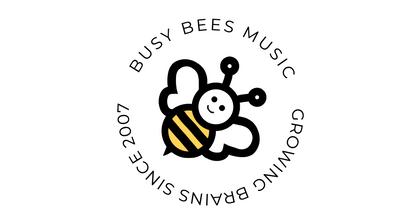
CLUB MARCONI, 121-133 PRAIRIE VALE ROAD, BOSSLEY PARK NSW 2176

Ever noticed your baby flailing their arms outward when startled, or gripping your finger with surprising strength? These are more than just cute quirks, they're called primitive reflexes, and they’re actually vital signs of healthy brain and nervous system development.
These reflexes are involuntary movements that babies are born with, helping them navigate those first few months outside the safety of the womb. They’re nature’s built-in kit for feeding, bonding, and kickstarting movement.
In today’s world, with more time spent in car seats, prams, or highchairs, and less time on the floor, some movement opportunities can be limited. This can sometimes affect how reflexes integrate . The good news is, it’s never too late to support this process through playful, intentional movement
So… let’s start at the beginning.
Primitive reflexes are automatic movements that are controlled by the brainstem. Some examples that you might have seen:
Moro reflex: This one’s often called the startle reflex, and you’ve probably seen it when a loud sound happens, or baby suddenly feels like they’re falling, their arms fling out wide, almost like they’re doing a little starfish move. It’s the body’s built-in alarm system, helping them react to danger (even if there isn’t any!)
Rooting reflex: this one is when your bubba's head turns towards a touch on the cheek. Very handy for finding milk.
Palmar grasp reflex: this is the one that gets all the 'oh they're so strong' comments when they grip your finger with hulk strength
Asymmetrical tonic neck reflex (ATNR): this is when the head of the baby turns to one side and the arm on the same side extends and the opposite one bends (also known as the 'fencing' reflex).
Each of these reflexes plays a role in early development and, ideally, fades as the brain matures and the higher brain centers take control. Reflexes are essential for building the brain-body connection - but only for a short time. Over time, these reflexes should become integrated, allowing for more purposeful movement and advanced cognitive development.
You can think of reflexes as happening in two main stages:
Primitive reflexes are the first to appear. These are automatic survival responses, like sucking, grasping, and startling, that begin in utero or at birth and should fade away as the brain matures.
Postural reflexes come next. These are more mature and help with balance, coordination, and posture, like keeping the head upright, bracing in a fall, or learning to sit and crawl.
As primitive reflexes integrate, postural reflexes take over, allowing babies to move with more control and intention.
Most primitive reflexes vanish during the first year of life, through a process called integration. It happens as the brain develops and babies get lots of movement and sensory input. Here is what works:
1. Tummy time and floor play
Rolling, creeping, reaching, pushing up, all those wiggly little movements help the brain make connections and change from reflex-controlled movement to voluntary control.
2. Cross-lateral movement
Movements that involve one side of the body to work with the other (like crawling, marching, or clapping games) use both sides of the brain and encourage integration.
3. Sensory-rich experiences
Touch, sound, balance, movement, pressure. When babies utilize their senses, the nervous system grows in all the right directions. Swinging, bouncing, climbing, even mouthing toys are all a part of this.
4. Repetition and rhythm
Rhythmic movement (like rocking, swaying, or play with music) helps to form strong brain-body connections. That's why themusic andmovement combo can be so potent.
5. A calm, connected state
Stress and overload can delay integration. When children are secure, supported, and connected, the brain is more capable of moving beyond early reflex patterns.
Each of these elements - tummy time, cross-lateral movements, sensory-dense experiences, rhythmic play, and establishing a peaceful, connected space - are allnaturally woven into a Busy Bees Music class. Everything we do in music class is specifically designed to support your child's development, cultivating brain-body connections through active, joyful movement and playfulness. By allowing plenty of time for freewheeling movement and exploration, we help your little one build essential developmental pathways in a relaxed, natural way. Every class provides a setting in which your kiddo can learn and grow, setting the stage for the natural integration of primitive reflexes and allowing your child to acquire voluntary control of movement as they grow.
If a reflex lasts longer than it should, it can show up as minor roadblocks to learning, movement, or behavior. It doesn't always mean anything is wrong,but it might be worth taking a closer look.
Some indications that a retained reflex might be involved are:
Trouble with coordination or balance
Poor posture or difficulty sitting quietly
Handwriting problems or avoidance of fine motor tasks
Oversensitivity to sound, movement, or touch
Emotional reactivity or impulse control challenge
Reading or attention difficulties
Discomfort with head movement, rolling, or crossing the midline
Of course, every child is different. Sometimes these are a normal part of development. But if you're noticing a pattern, it's perhaps time for a closer look.
Sometimesyou might notice indicators that a reflex is still present or your baby is struggling with movement. In these cases, I work together with Jenny Le at Health Collab, a paediatric chiropractor specializing in the nervous system. Jenny is able to assess and realign any remaining reflexes in a non-invasive manner to assist with smoother development. She also provides tips to make your child's brain and body work together in harmony for optimal development. We incorporate her expertise with the musical movement exercises in our classes to help your child develop, and grow,fostering optimal growth and development.
Jenny clinic is in Greenway Centre, Wetherill Park. You can reach out to her here:
https://healthcollab.com.au/